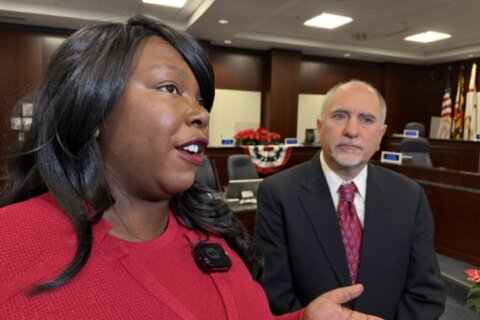In recent years, development has become a major issue for voters in Prince George’s County, Maryland.
A decade ago, the county approved a planning document called Plan 2035, which called for about half of all new housing to be built inside the Capital Beltway and near transit stations — and another 25% near commuter transit and town center areas.
Only 24% of new development was supposed to be built up in other areas — think subdivisions accessible only by car — which critics sometimes label as sprawl.
The county has made progress — but hasn’t come close to meeting those goals.
Now, with budget season looming — and with the county hoping to boost its population by tens of thousands this year, while also increasing the overall amount of housing in the county — changes could be coming to rules surrounding new developments.
At a briefing last week, members of the county’s Planning Department talked about some of the recommendations that could be coming this year, as the county council tries to achieve its goal of not just more housing, but more transit-oriented housing.
Read more about development in Prince George’s County
- DC area needs more housing. So why might Prince George’s Co. cap new permits next year?
- Is it economic growth or sprawl? Prince George’s Co. battles over building housing
Some of the recommendations that could make its way into future legislation include not just a streamlining of the development process in the targeted growth areas, but an increase in the density allowed inside those new developments.
“We want to investigate our level of service requirements … inside Metro centers and (investigate) reducing impact fees in target growth areas,” said Tony Felts, the chief of community planning in Prince George’s County. “These are items to incentivize development in our priority areas.”
But he also said efforts to dissuade growth outside of the Capital Beltway also might be needed.
“Some of these strategies include considering raising adequate public facilities requirements … outside the Beltway, and investigating impact fees and surcharges,” said Felts. “The planning department will be conducting a study this calendar year to explore how different types of development scenarios in different parts of the county affect tax revenues and public service costs and from there develop actionable strategies to address the findings of that study.”
Planning department leaders suggested that could mean a recommendation to increase impact fees in areas seeing more growth than the Plan 2035 document calls for.
“We think there should be a conversation about that, to make sure that development, especially development outside the Beltway is actually paying its appropriate share of the cost of the additional services that the government is going to require,” said Derick Berlage, deputy director of operations with the Maryland National Capital Parks and Planning Commission. “We will make that as a recommendation, as a tool — as a planning tool. And as a growth-management tool.”
But he conceded it would be up to the council and County Executive Angela Alsobrooks to decide whether that’s something to implement. Council member Tom Dernoga said a change to state law might also be needed to do that.
On a smaller scale, the planning department said it will prioritize programs and regulations that could lead to more immediate housing options, such as finding properties that are vacant and underutilized currently, but could support new housing; and identifying areas of the county that can support what’s known as “missing middle” housing. That would also likely require further changes to zoning codes.
Get breaking news and daily headlines delivered to your email inbox by signing up here.
© 2024 WTOP. All Rights Reserved. This website is not intended for users located within the European Economic Area.








